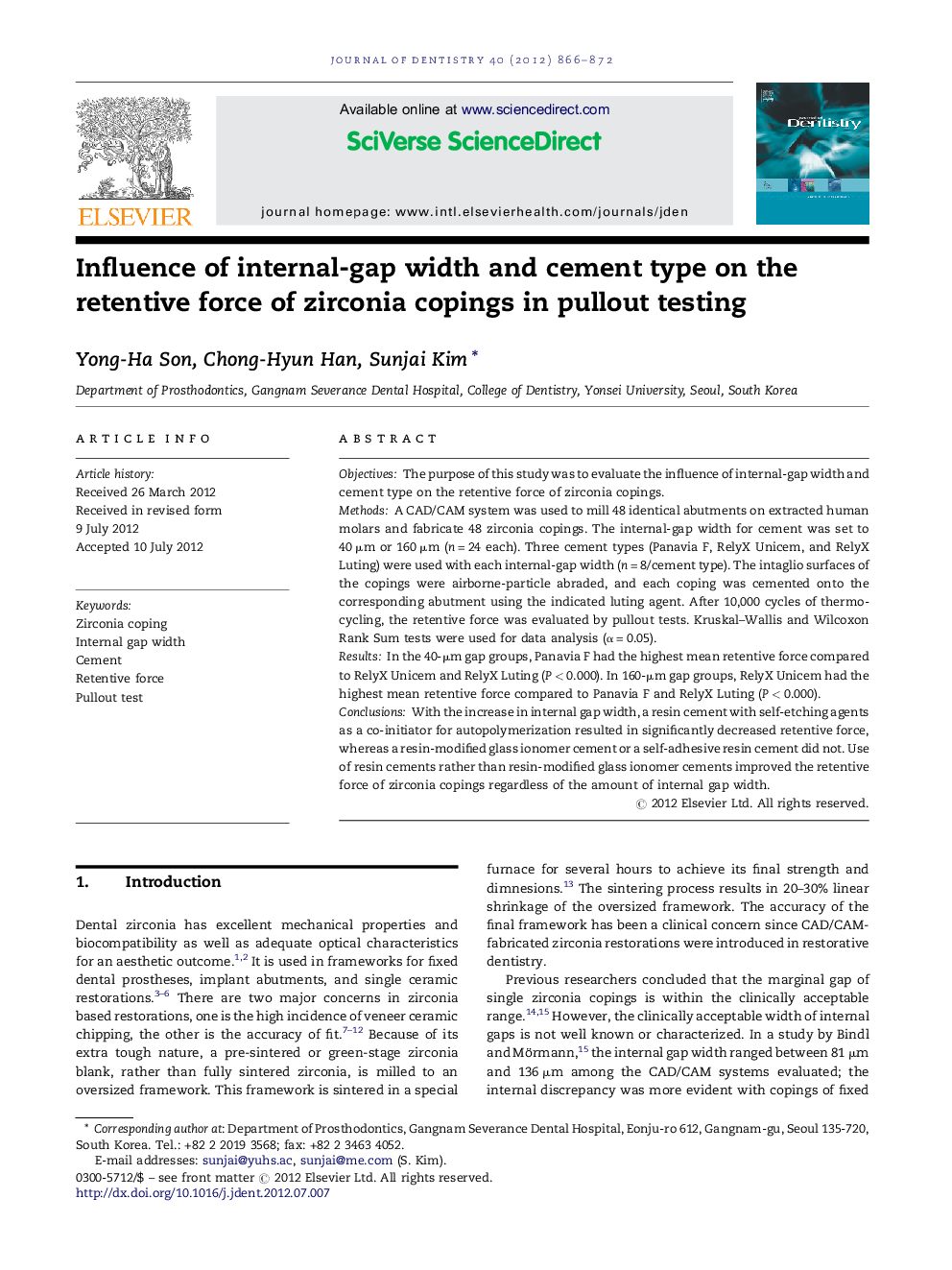| Article ID | Journal | Published Year | Pages | File Type |
|---|---|---|---|---|
| 3145081 | Journal of Dentistry | 2012 | 7 Pages |
ObjectivesThe purpose of this study was to evaluate the influence of internal-gap width and cement type on the retentive force of zirconia copings.MethodsA CAD/CAM system was used to mill 48 identical abutments on extracted human molars and fabricate 48 zirconia copings. The internal-gap width for cement was set to 40 μm or 160 μm (n = 24 each). Three cement types (Panavia F, RelyX Unicem, and RelyX Luting) were used with each internal-gap width (n = 8/cement type). The intaglio surfaces of the copings were airborne-particle abraded, and each coping was cemented onto the corresponding abutment using the indicated luting agent. After 10,000 cycles of thermocycling, the retentive force was evaluated by pullout tests. Kruskal–Wallis and Wilcoxon Rank Sum tests were used for data analysis (α = 0.05).ResultsIn the 40-μm gap groups, Panavia F had the highest mean retentive force compared to RelyX Unicem and RelyX Luting (P < 0.000). In 160-μm gap groups, RelyX Unicem had the highest mean retentive force compared to Panavia F and RelyX Luting (P < 0.000).ConclusionsWith the increase in internal gap width, a resin cement with self-etching agents as a co-initiator for autopolymerization resulted in significantly decreased retentive force, whereas a resin-modified glass ionomer cement or a self-adhesive resin cement did not. Use of resin cements rather than resin-modified glass ionomer cements improved the retentive force of zirconia copings regardless of the amount of internal gap width.
